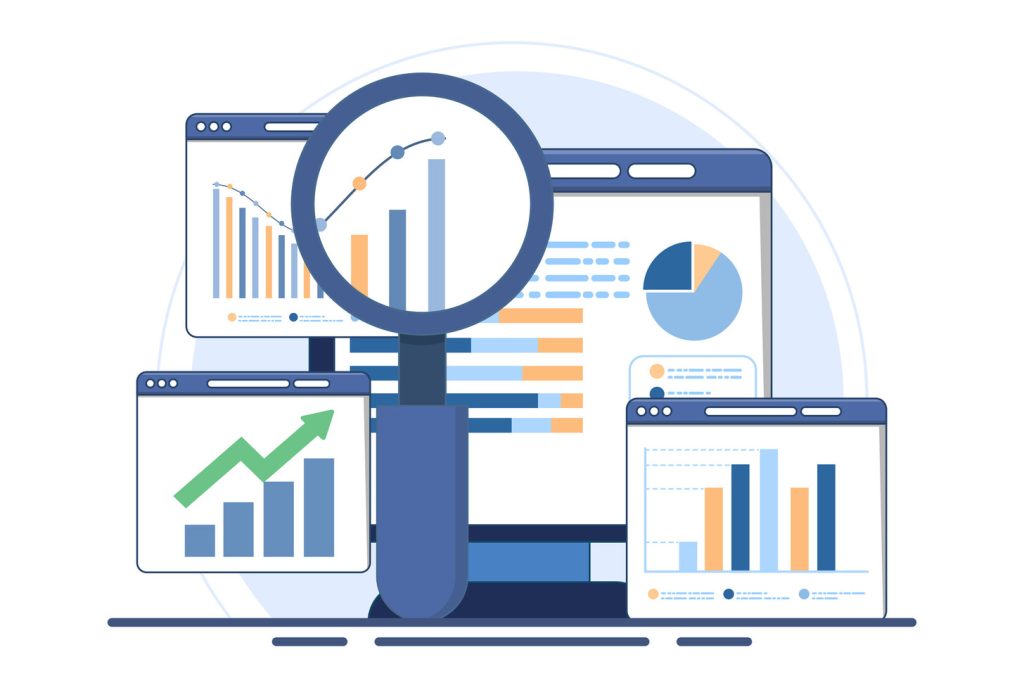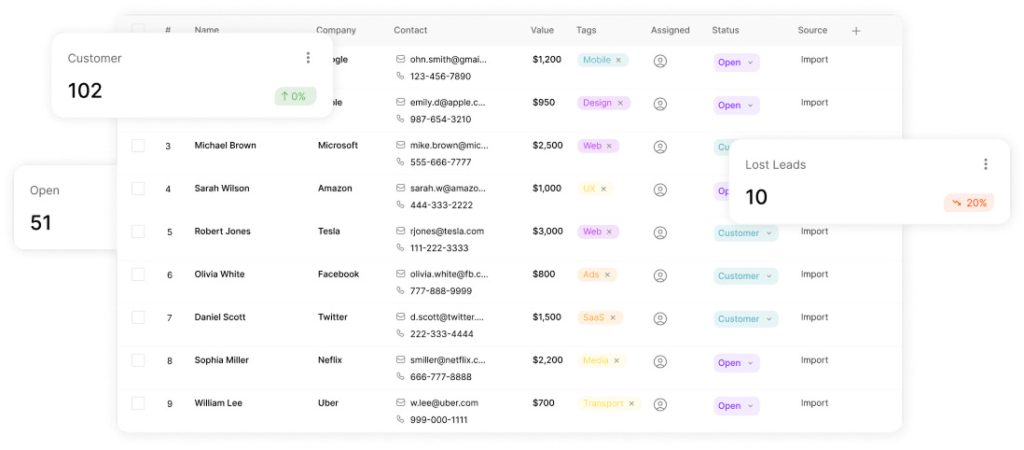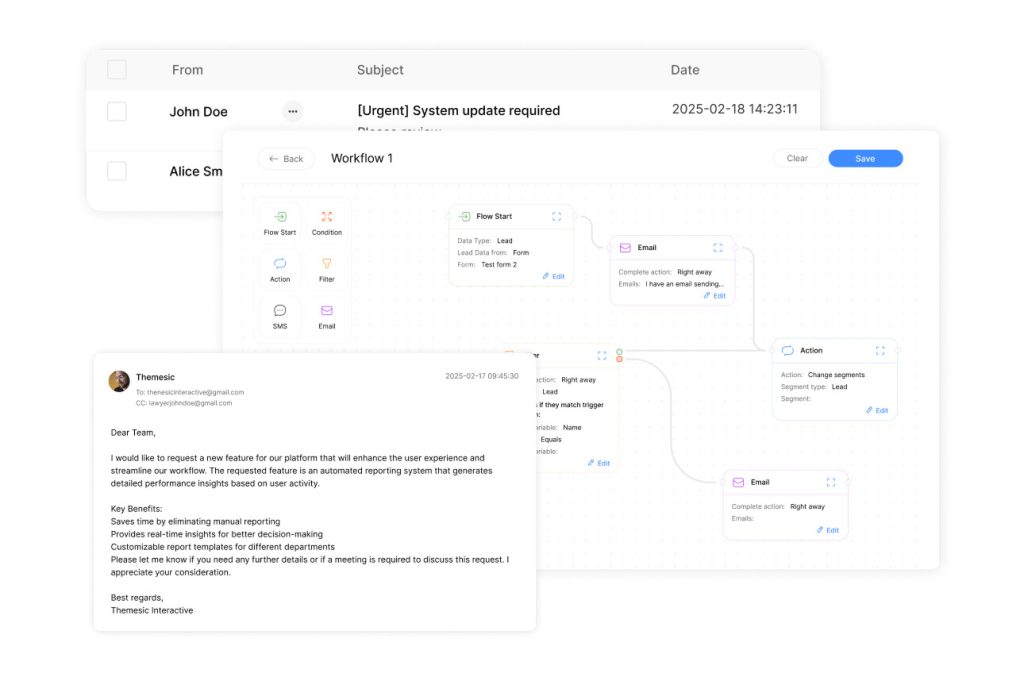The Ultimate Guide to Once-Click Convert Lead To Customer

Most businesses pour resources into attracting potential clients, but few succeed in turning those opportunities into revenue. Studies show that only a small fraction of website visitors are ready to purchase immediately, leaving companies struggling to bridge the gap between initial interest and final action. This disconnect often stems from outdated processes that fail to prioritize speed and simplicity.
Modern strategies demand more than just generating leads—they require intentional systems to nurture prospects efficiently. Metrics like conversion rate and lead-to-sales ratios reveal critical insights into where workflows break down. For example, businesses using streamlined CRM solutions often see measurable improvements by aligning marketing efforts with automated follow-ups.
This guide explores how to eliminate friction in client acquisition. Readers will discover data-backed methods to refine their approach, reduce wasted effort, and capitalize on high-intent prospects. By focusing on actionable steps rather than theoretical concepts, organizations can unlock faster growth while maintaining scalability.
Key Takeaways
- Prioritize simplicity to reduce drop-offs during critical decision-making stages.
- Leverage automation tools to maintain momentum with potential clients.
- Track performance metrics to identify bottlenecks in sales pipelines.
- Align team workflows to ensure consistent follow-through on opportunities.
- Use integrated platforms to centralize data and improve response times.
Understanding the Basics of Lead Conversion
Turning potential interest into revenue starts with mastering foundational principles. A lead represents any individual or organization showing interest in a product or service. Conversion occurs when that prospect completes a desired action, such as making a purchase or signing a contract. The lead conversion rate—the percentage of leads becoming customers—reveals how effectively teams turn opportunities into results.
Qualifying and Prioritizing Opportunities
Not all leads hold equal value. Marketing-qualified leads (MQLs) meet criteria like downloading content or attending webinars, while sales-qualified leads (SQLs) demonstrate budget and decision-making authority. Forrester Research notes companies using this distinction see 27% faster revenue growth than those without clear segmentation. Aligning sales and marketing around these definitions reduces wasted effort and sharpens focus on high-potential prospects.
Metrics That Drive Decisions
Key performance indicators include average sales cycle length, cost per conversion, and lead-to-close ratios. For example, businesses with a 5% conversion rate often outperform competitors stuck at 2-3%. Tracking these metrics helps teams identify bottlenecks—like slow response times or mismatched messaging—that derail progress. Regular analysis ensures strategies adapt to shifting buyer behaviors and market conditions.
Understanding these fundamentals creates a roadmap for improvement. Teams that master lead scoring and metric tracking build scalable systems for sustainable growth.
Creating a Seamless Conversion Strategy

When sales and marketing teams operate in sync, businesses shorten the path from prospect interest to closed deals. Research shows organizations with aligned departments achieve 38% higher conversion rates than siloed teams. This collaboration ensures consistent messaging, faster response times, and a unified understanding of customer needs.
Breaking Down Departmental Barriers
A shared definition of qualified leads prevents miscommunication. Marketing might prioritize webinar attendees, while sales focuses on contacts with budget authority. Regular strategy meetings and shared KPIs bridge this gap, creating a cohesive roadmap for nurturing prospects.
Effective alignment leverages tools like coordinated email campaigns and CRM automation tools. Automated workflows ensure timely follow-ups, while centralized data helps teams personalize content based on prospect behavior. For example, businesses using these systems often see a 20-30% improvement in lead response efficiency.
Misalignment carries tangible costs. One SaaS company lost 22% of potential revenue when sales ignored marketing-generated leads due to inconsistent follow-up protocols. Clear content addressing specific pain points—like case studies or comparison guides—reduces friction during decision-making stages.
Actionable steps to improve synergy:
- Host weekly cross-departmental reviews to align goals and metrics
- Implement shared dashboards for real-time lead tracking
- Train teams on each other’s workflows to build empathy
These strategies create a unified front, turning fragmented efforts into a conversion engine that drives sustainable growth.
One-Click Convert Lead To Customer: A Streamlined Approach

Traditional conversion methods often lose momentum through unnecessary steps. Multi-page forms, delayed responses, and manual follow-ups create barriers that deter potential buyers. A streamlined one-click approach eliminates these obstacles by allowing immediate action at peak interest moments.
What Makes a One-Click Process Effective?
Modern systems prioritize speed and simplicity. For example, tools like CallPage use instant callback features to connect businesses with leads within 28 seconds—a strategy proven to increase conversion rates by up to 40%. This immediacy capitalizes on high-intent prospects who might otherwise abandon traditional processes.
| Traditional Methods | One-Click Approach |
|---|---|
| 3+ form fields | Single-click submission |
| 24-hour response time | Instant connection via automation |
| 15% average conversion | 35-45% conversion potential |
Key features driving this efficiency include:
- Pre-filled data fields using CRM integrations
- Automated triggers for real-time engagement
- Mobile-optimized interfaces for on-the-go users
“Companies using one-click solutions see 3x faster lead processing compared to manual systems.”
Businesses adopting these tools today reduce administrative tasks while maintaining personalized outreach. A SaaS provider increased qualified leads by 28% after implementing one-click demo scheduling alongside targeted follow-up sequences.
Step-by-Step Process to Convert Leads into Customers
Effective lead conversion hinges on structured workflows that guide prospects from initial curiosity to final commitment. Businesses with clear processes achieve 42% faster sales cycles than those relying on ad-hoc methods, according to Gartner research. This approach balances urgency with strategic nurturing to maximize outcomes.
Initial Contact and Lead Scoring
Prioritizing high-potential prospects starts with data-driven scoring. Assign points based on factors like website engagement frequency, job title relevance, and content download history. For example, a B2B software company increased conversions by 33% by focusing on leads who attended product demos and visited pricing pages.
Key scoring criteria include:
- Budget authority (decision-makers score higher)
- Engagement depth (e.g., multiple page views)
- Response speed to previous outreach
Follow-Up Tactics and Closing the Sale
Timing shapes success. Leads contacted within 5 minutes convert 9x more often than those reached after 30 minutes. Use automated alerts to trigger immediate follow-ups via preferred channels—phone calls for high-priority leads, personalized emails for others.
A SaaS provider boosted close rates by 18% using this sequence:
- Send meeting recap email within 1 hour
- Share case studies matching prospect’s industry
- Schedule final negotiation call within 72 hours
“Automated reminders reduced our no-show rate by 40% while keeping conversations warm.”
Teams using these methods consistently outperform competitors by maintaining momentum through critical decision phases.
Leveraging Technology and Automation Tools

Technology reshapes how businesses engage prospects at critical moments. Automated systems now handle repetitive tasks, freeing teams to focus on high-value interactions. This shift allows companies to respond faster while maintaining personalized outreach—key for converting hesitant leads into committed clients.
Utilizing CRM Software and Automated Messaging
Centralized platforms like CRM systems track prospect behavior across channels. Features like lead scoring prioritize contacts based on engagement levels. Automated emails triggered by specific actions—such as downloading a whitepaper—deliver tailored content without manual effort.
Businesses using these tools achieve 40% faster follow-ups compared to manual processes. For example, a SaaS company increased conversions by 34% after integrating CRM-driven workflows with real-time notifications for sales teams.
Implementing Email Marketing and Callback Tools
Personalized email sequences nurture leads through decision stages. Dynamic content adapts to user interests, like showcasing relevant case studies or targeted marketing campaigns. Pairing emails with instant callback options bridges gaps when prospects have urgent questions.
- Callback tools like CallPage connect sales reps within 30 seconds
- Automated reminders reduce missed appointments by 52%
- Free trial offers in emails boost sign-ups by 28%
“Firms combining CRM data with automated messaging see 3x higher lead-to-sales ratios than those relying on spreadsheets.”
These technologies create frictionless experiences. Prospects receive timely information, while teams gain actionable insights to refine strategies continuously. The result? Measurable gains in conversion rates and customer lifetime value.
Enhancing Personalization to Boost Conversion Rates
Generic outreach rarely captures buyer interest in today’s saturated markets. Tailored messaging builds trust by addressing specific needs—68% of prospects expect personalized interactions before considering purchases. This shift makes customization non-negotiable for teams aiming to improve lead conversion rates.
Crafting Messages That Resonate
Effective personalization starts with understanding buyer personas. Analyze data like industry challenges, content preferences, and past interactions. A SaaS company increased trial sign-ups by 37% using dynamic emails that referenced users’ previous demo attendance.
Key methods include:
- Segmenting leads based on behavior (e.g., webinar attendees vs. pricing page visitors)
- Using first names and company details in outreach
- Matching content formats to prospect preferences (video vs. case studies)
“Brands that personalize web experiences see 19% higher sales conversion rates than those using generic approaches.”
Lead nurturing thrives on consistency. Automated sequences with staggered touchpoints—like follow-up messages after free trials—keep prospects engaged. One fintech firm reduced drop-offs by 22% by sending personalized check-ins every 72 hours.
Integrating these tactics into a lead conversion strategy requires alignment between data teams and sales. Centralized CRM platforms track interactions, enabling real-time message adjustments. The result? Higher attention retention and measurable growth in closed deals. Incorporating the most effective processes can further enhance the conversion rates. For instance, utilizing the top lead management tools reviewed ensures that teams can prioritize leads based on their engagement levels, significantly boosting efficiency. By leveraging data-driven insights, businesses can refine their outreach strategies, leading to even greater success in closing deals.
Improving Lead Response Times for Maximum Impact

Speed separates thriving businesses from those losing prospects to competitors. Research shows 78% of buyers choose vendors who respond first. Immediate engagement builds trust and capitalizes on peak interest moments.
Why Timing is Critical in Lead Conversion
Leads cool rapidly. Contact within 5 minutes boosts conversion chances by 9x compared to 30-minute delays. Time-sensitive opportunities—like pricing page visits—require instant alerts to sales teams. One logistics company increased deals closed by 21% using automated SMS notifications for high-priority leads.
Data reveals stark contrasts:
- 35% conversion rate when responding in under 5 minutes
- 8% conversion rate after 10+ minutes
“Firms responding within 60 seconds retain 3x more visitors than those waiting 24 hours.”
Best Practices for Rapid Follow-Up
Automation bridges speed-personalization gaps. Tools like Calendly sync with CRMs to book meetings instantly. Sales teams using AI-powered chatbots see 42% faster lead qualification through 24/7 inquiry handling.
Effective strategies include:
- Setting triggers for website activity (e.g., demo requests)
- Using pre-written email templates with dynamic fields
- Analyzing peak engagement times for targeted outreach
A SaaS provider reduced response times from 2 hours to 4 minutes using automated callbacks. Their sales pipeline velocity improved by 33% within three months. Real-time dashboards help teams prioritize leads showing urgent buying signals.
Real-World Examples and Case Studies
Real-world results validate strategies that turn prospects into paying clients. Businesses across industries prove targeted tactics yield measurable success. Let’s examine three examples where innovation solved persistent conversion challenges.
Zendesk Sell: This CRM provider faced low engagement from trial users. Their solution? Dynamic call-to-action buttons tailored to user behavior. Visitors who viewed pricing pages received instant demo offers. Leads contacted within 2 minutes converted 45% more often than slower responses. Automated reminders reduced no-shows by 31%.
SalesRobot Case Study: A B2B software company struggled with cold outreach. By integrating personalized video messages into email sequences, they boosted reply rates by 62%. Prospects received tailored demos addressing specific industry pain points. Conversion rates jumped 28% in six months.
“Automation cut our lead response time from 12 hours to 90 seconds. Conversions tripled as we engaged buyers at decision-making moments.”
Healthcare SaaS Example: A patient portal platform used chatbots to qualify leads 24/7. AI-driven questions identified urgent needs, routing high-priority cases to sales reps. This approach slashed follow-up delays and increased customer acquisition by 38% quarterly.
Key lessons from these successes:
- Segment leads based on real-time behavior for hyper-relevant outreach
- Combine email automation with human touchpoints for balance
- Measure every interaction to refine conversion pathways
These examples demonstrate how solving specific problems with tailored tools drives industry-leading results. Businesses adopting similar methods often see double-digit growth in lead-to-customer ratios.
Optimizing Your Website and Digital Tools for Lead Conversion

Digital platforms serve as the frontline for turning visitors into prospects. A poorly designed website costs businesses up to 75% of potential leads, according to Baymard Institute research. Strategic enhancements to layout and functionality directly impact conversion rates by reducing friction during critical decision-making moments.
Design Choices That Drive Action
Clear navigation paths guide users toward desired actions. Simplified menus, visible search bars, and mobile-responsive layouts keep visitors engaged. For example, Shopify increased sign-ups by 12% after redesigning its homepage to prioritize free trial buttons over secondary content.
Key elements proven to boost conversions:
- Fast load times (under 2 seconds)
- Contrasting CTA buttons placed above the fold
- Trust signals like security badges or client logos
| Traditional Website | Optimized Version |
|---|---|
| 5+ menu categories | 3-click maximum to key pages |
| Generic contact forms | Contextual chat widgets |
| 2.8s average load time | 1.2s load time |
“Sites with intuitive navigation see 47% higher engagement from high-intent visitors compared to complex designs.”
Content Clarity and Technical Precision
Up-to-date information builds credibility. HubSpot’s pricing page redesign—featuring tiered options with real-time calculator tools—increased demo requests by 29%. Regular audits ensure outdated content or broken links don’t derail prospect trust.
Actionable optimization steps:
- Run heatmaps to identify unused page sections
- Test form lengths using A/B variations
- Integrate live chat during peak traffic hours
Businesses implementing these strategies often see measurable improvements within weeks. The goal? Create seamless experiences where visitors naturally progress from exploration to action.
Integrating Comprehensive Lead Conversion Strategies
Successful conversion strategies demand seamless integration across all customer touchpoints. Disconnected efforts—like isolated social media campaigns or standalone email sequences—often fail to guide prospects through decision stages. A unified approach bridges gaps between departments, tools, and messaging for measurable results.
Unifying Digital Outreach and Sales Execution
Coordinated campaigns outperform fragmented tactics. Marketing teams using CRM data to inform content creation see 32% higher engagement than those working in silos. For example, pairing blog posts with targeted email follow-ups keeps prospects engaged longer.
| Traditional Strategy | Integrated Approach |
|---|---|
| Separate social media and email teams | Shared content calendars across platforms |
| 19% average conversion rate | 27-35% conversion rates |
| Manual lead handoffs | Automated CRM triggers for sales alerts |
Three core components drive success:
- Content alignment: Blog articles supporting product demos
- Channel synchronization: Social media ads linked to landing pages
- Data sharing: Real-time analytics for sales teams
“Companies integrating sales and marketing tools achieve 41% faster pipeline growth than those using separate systems.”
Implementation starts with cross-team workshops. Define shared KPIs, audit existing workflows, and establish feedback loops. Monthly performance reviews help teams refine strategies based on conversion metrics and prospect behavior patterns.
Conclusion
Mastering lead conversion requires blending strategy with precision execution. This article outlined proven methods to transform prospects into loyal customers—prioritizing speed, personalization, and data-driven decisions. Brands that act swiftly on high-intent signals see 35% higher conversion rates than slower competitors.
Key metrics like response time and lead conversion rate reveal where teams excel or falter. Automated tools bridge gaps between initial contact and closed sales, ensuring no opportunity cools. Businesses leveraging CRM integrations and dynamic content achieve measurable gains without excessive effort.
Today’s competitive markets demand integrated approaches. Align teams, streamline workflows, and test continuously. The result? Consistent growth rooted in solving customer problems rather than pushing generic pitches.
Apply these insights now. Audit your current process, implement one improvement this week, and track results. Success hinges on taking deliberate steps—not waiting for perfect conditions. Start refining your strategy today.

